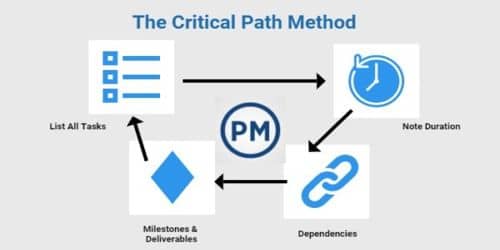Characteristics of Critical Path Method (CPM)
A critical path is an activity or event that, if delayed, will delay project completion. The critical path method (CPM) is a step-by-step technique for process planning that defines critical and non-critical tasks with the goal of preventing time-frame problems and process bottlenecks. The CPM is ideally suited to projects consisting of numerous activities that interact in a complex manner. It can help you keep your projects on track.
- CPM uses activity oriented network.
- Duration of activity may be estimated with a fair degree of accuracy.
- It is used extensively in construction projects.
- CPM is the management of repetitive projects.
- The deterministic concept is used.
- CPM can control both time and cost when planning.
- Identifies the critical and non-critical activities of the project so that we can focus more on the critical activities and complete the project on time.
- Crashing is a compression technique applied to CPM, to shorten the project duration, along with least additional cost.
- CPM is used to compute the earliest and latest possible start time for each activity.
- In CPM, cost optimization is given prime importance. The time for the completion of the project depends upon cost optimization. The cost is not directly proportioned to time. Thus, the cost is the controlling factor.















